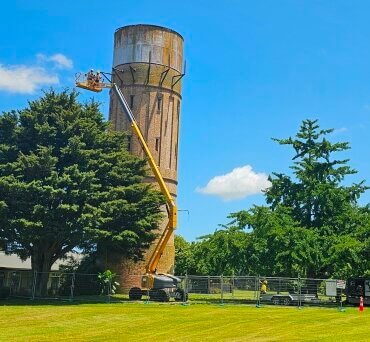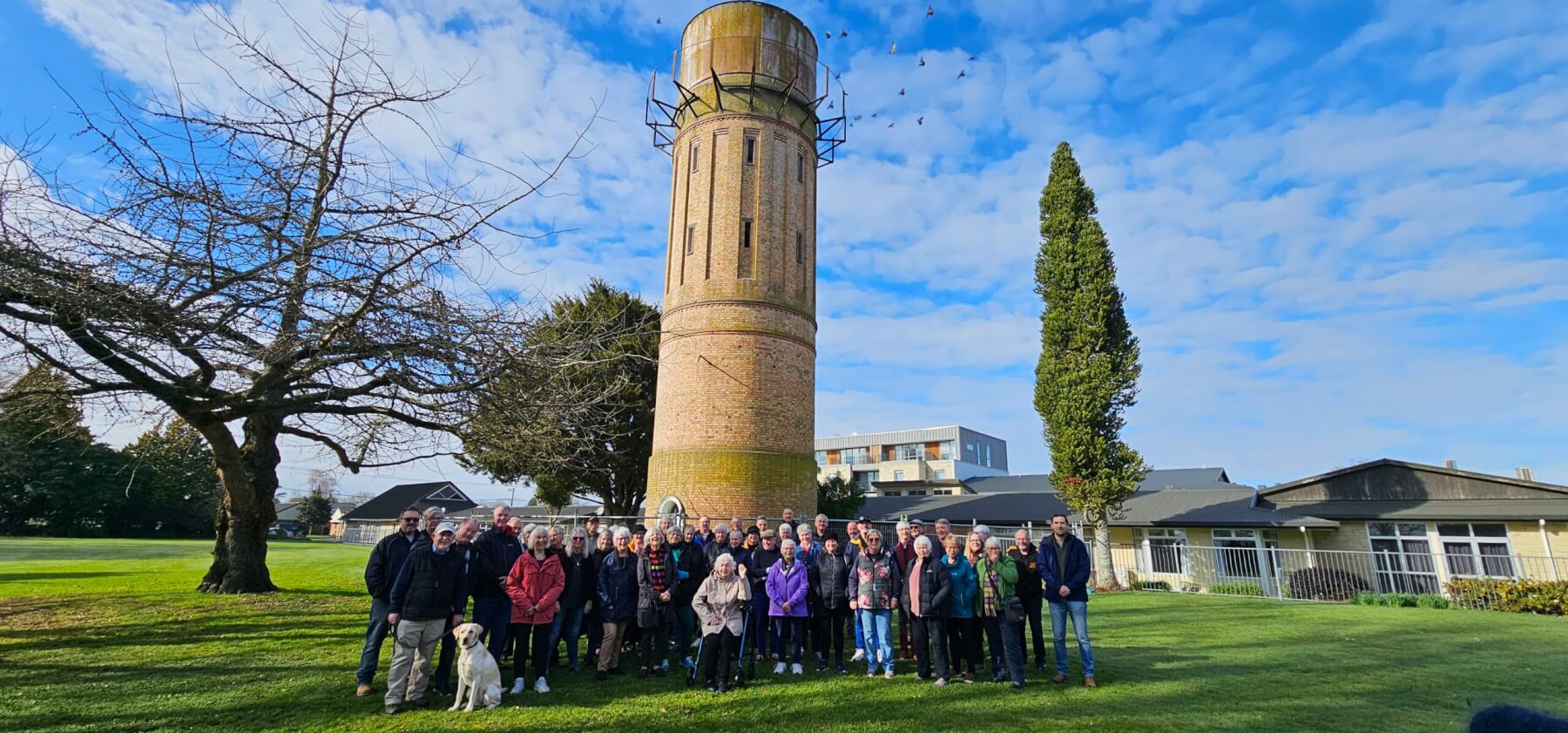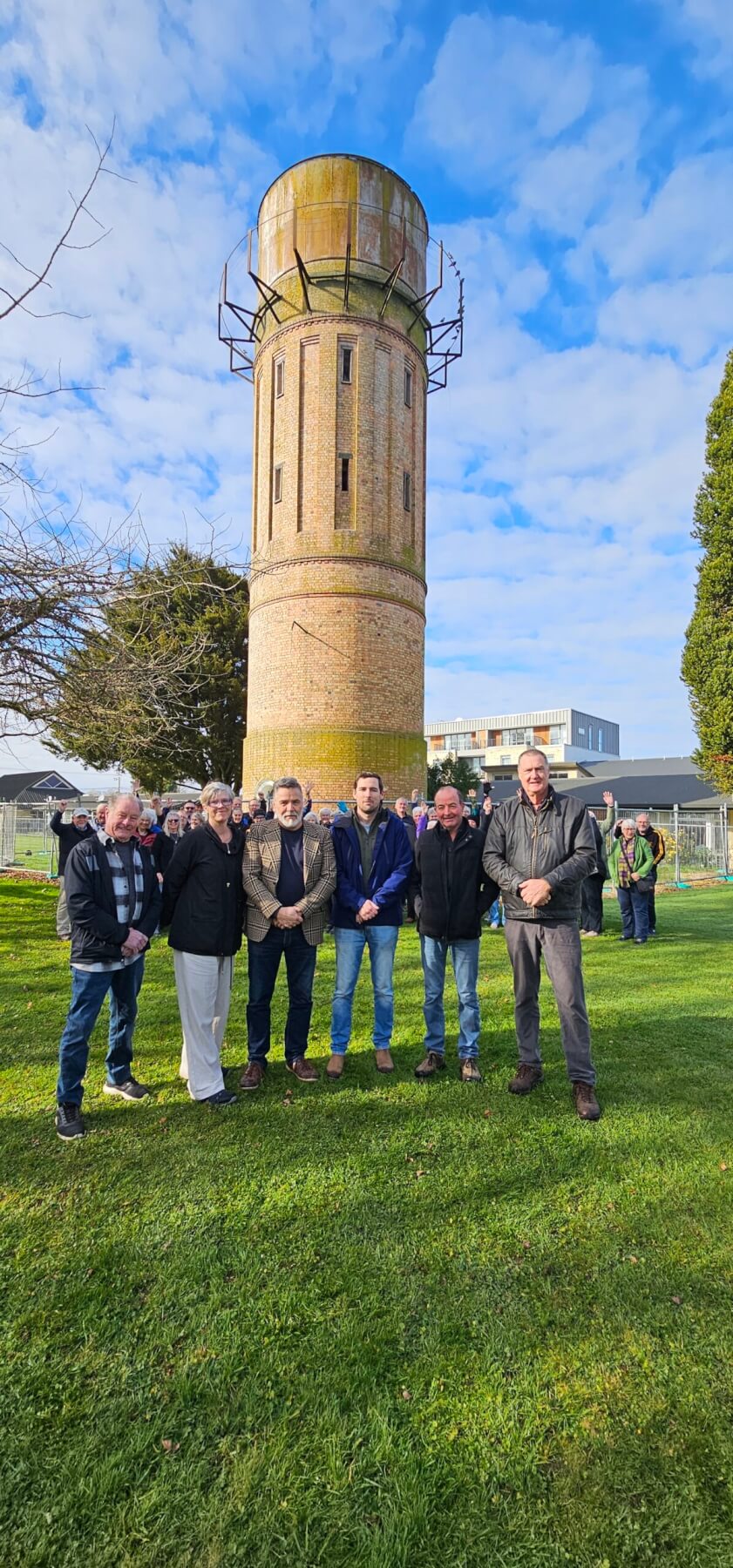
Water Tower surrounds taken down.
The future of Cambridge’s historic water tower could hinge on the results of new foundation testing which started this week.
See: Cambridge water tower updates

Members of the newly-formed Save the Cambridge Water Tower. Photo: Mary Anne Gill
Waipā District Council is drilling and testing a ‘micro-pile’ next to the tower to see whether this type of foundation, along with internal seismic strengthening of the tower brickwork, could provide an affordable way to strengthen and save the 115-year-old landmark.
Council property services manager David Varcoe said the results will play a key role in shaping preliminary designs and cost estimates for potential restoration.
“We’re testing a foundation option that could work well,” Varcoe said. “If the results are positive, micro-piles could give us a practical and affordable way to strengthen the tower without major disruption.”
The small but powerful steel-cased pile will be pressure-grouted and left up to two weeks before being load-tested. The result will show how many piles would be needed to support the tower during a moderate earthquake.
“These piles are incredibly strong and flexible – they can handle both pushing and pulling forces,” Varcoe said. “By putting one to the test here, we’ll know whether this approach could give the tower a new lease on life.”

David Varcoe
Council has been looking for a feasible and responsible solution to restore the tower, since it was identified as being earthquake prone in 2014.
After consulting with the community on restoring or removing the tower during the 2024-25 Enhanced Annual Plan consultation, the council initially opted for removal based on initial cost estimates and the feedback received during the submission process.
However, as work began to prepare a resource consent for removal, new engineering techniques were identified that could make restoration more affordable.
That led to a fresh round of investigations, including a new detailed seismic assessment completed earlier this year.
It confirmed the tower meets just 20 percent of the strength of a modern building built to today’s standards. Based on information currently available about changes to earthquake-prone building legislation, it is likely the tower will still need to be either strengthened or removed.
The preliminary design and costings are expected to be completed by early 2026, after which council will make a final decision on whether to restore or remove the tower.

Save the Cambridge Water Tower group founders, from left, Dave Linthwaite, Elizabeth Harvey, Peter Fulton, David Griffin, James Casey, Mike Kilgour. Photo: Mary Anne Gill.








